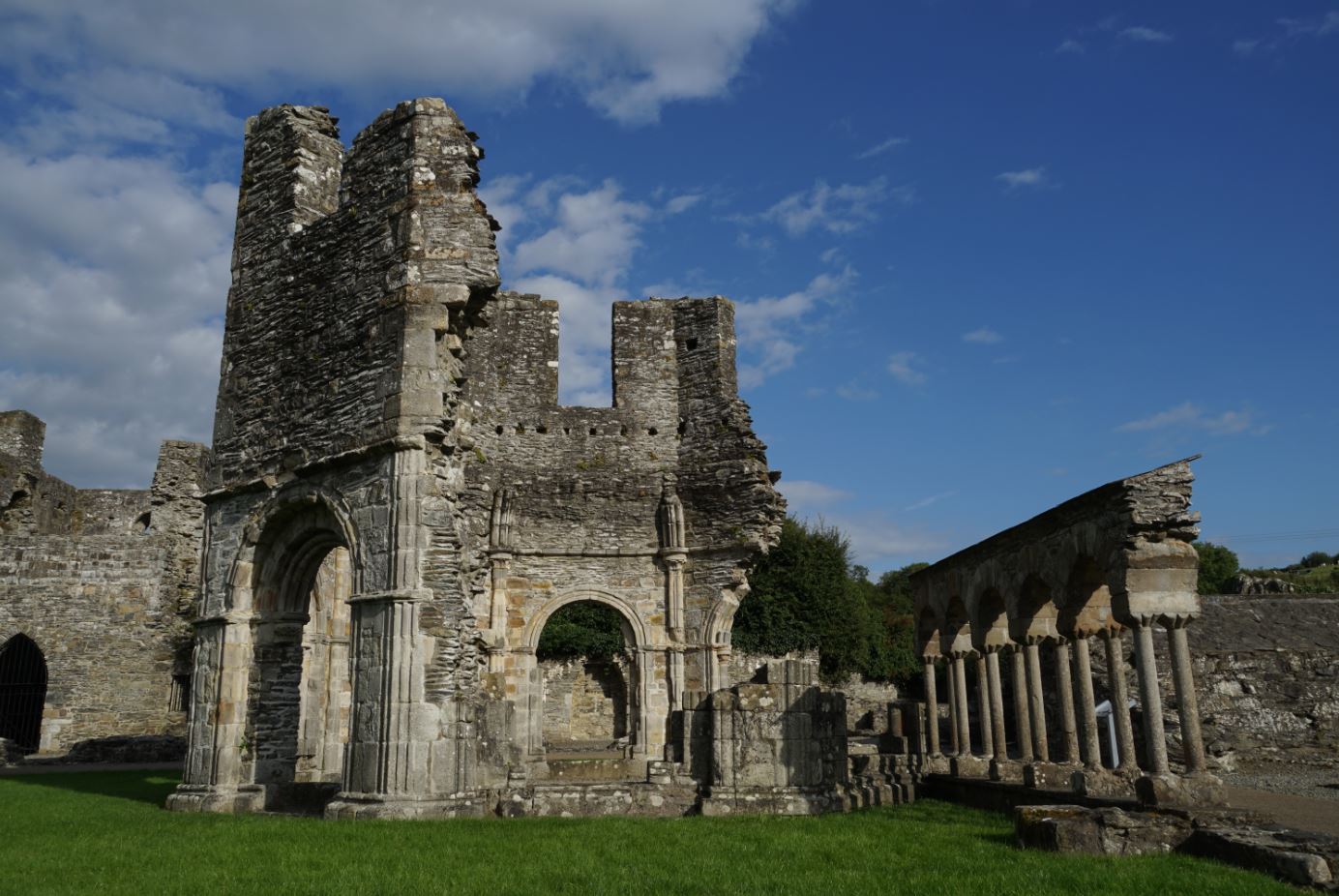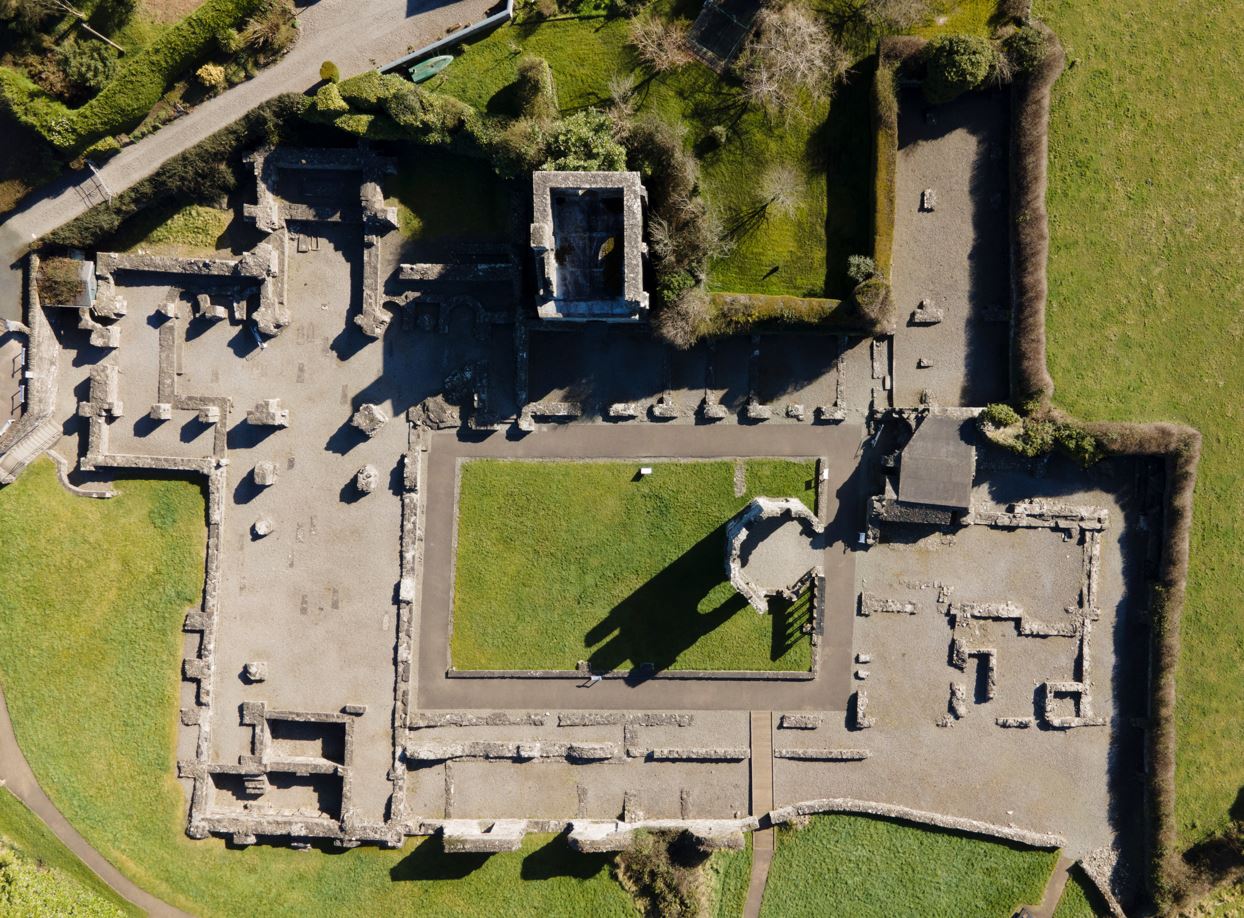1142 - the foundation of Mellifont Abbey
Maol Maodhóg Ua Morgair, better known today as Malachy, was born in Armagh in 1095. His family closely associated with the great monastery of Armagh, and he was just ten years old when Cellach was appointed bishop there. Cellach had been the driving force at the Synod of Ráith Bressail
in 1111, following which he was recognised as archbishop of the newly formed archdiocese of Armagh. Cellach was clearly impressed by the young Malachy, and ordained him as a deacon in 1118, and priest the following year. Shortly later, Malachy went to gain further training at Lismore, Co. Waterford under bishop Máel Ísu, who had also attended the Synod of Ráith Bressail and was a leading figure in the reform movement.
Ceallach died in 1129 while visiting the church of Ardpatrick, Co. Limerick and was buried at Lismore, Co. Waterford. Shortly before he died, Cellach appointed Malachy as his successor, which represented a major break in tradition in that he did not belong to the family that had controlled the governance of Armagh since the 10th century. Not surprisingly he met with opposition, and he had to wait until 1132 to take up the position. However, in 1136 Malachy resigned. Not content with holding the highest ecclesiastical office in Ireland, he seems to have set his sights on an even greater goal.
In 1140 Malachy visited Rome to seek the pallia from the Pope, required to formally establish the archiepiscopal sees at Armagh and Cashel that had been agreed at the Synod of Ráith Bressail. The pallium was an ecclesiastical vestment bestowed by the Pope on metropolitans and primates as a symbol of the jurisdiction delegated to them by the Holy See. Malachy’s journey took him through Scotland, England and France. He spent a month in Rome, after which Pope Innocent II refused to bestow him with the pallia for Armagh and Cashel. It appears that a delegation from Canterbury had already arrived there before him and persuaded the pope to refuse Malachy’s request, in the hopes that Canterbury itself would in time be recognised as the primate of Ireland as well as Britain. By way of consolation Malachy was appointed apostolic legate to Ireland. While Malachy may not have received what he had originally intended, he seems determined on using his new-found position to drive the reform movement in Ireland.
Though Malachy was an advocate of the diocesan reform of the Irish church, he was also convinced of the need to radically reform the ancient Irish monastic system. He felt that this could not be achieved from within, and he took the radical decision to bring the continental orders to Ireland to initiate the change. On his journey to Rome in 1140, Malachy visited St Bernard at the Cistercian abbey of Clairvaux in Burgundy, France. The Cistercians were a French order that broke away from the Bendictine monks and vowed to return to a literal observance of the rule of St Benedict. With the assistance of St Bernard, Malachy introduced the Cistercians to Ireland and founded an abbey at Mellifont in 1142. The benefactor of this new abbey was Donnchad Ua Cerbaill, king of Uriel, a minor kingdom that included much of modern-day counties Monaghan and Armagh. He had recently acquired lands that today constitute County Louth, and it was here that he donated the lands for Malachy’s new abbey. The Cistercian monks that arrived here were French, but also included some Irish novices who had trained at Clairvaux. It is said that the French monks quickly fell out with their Irish brethren and returned to France soon after. Whether or not this is true, within only four years, five daughter houses had been established across Ireland.
Malachy also turned his attention to the broader structure of the Irish church. In 1148 he convened a synod at Inis Pátraic, a small island off the Dublin coast near Skerries. Given Armagh’s association with St Patrick, the dedication of this small island church is unlikely to have been coincidental. It is probably also relevant that the location of this synod was close to Dublin, which had resisted previous overtures from Armagh and always sought spiritual leadership from Canterbury in England. The island of Inis Pátraic was probably selected as neutral ground where reconciliation could finally be reached. We know very little about what was discussed at this synod, but it appears that Dublin may have agreed to recognise the primacy of Armagh, thereby ending Canterbury’s influence that had previously been so divisive. As a compromise, Dublin would itself be recognised as a metropolitan see. It was also agreed that Tuam would be a metropolitan see. The first archbishop of the newly formed archdiocese of Tuam was none other than Aed O’Hession, the former abbot of Tuam who was assisted by Toirrdelbach Mór Ua Conchobhair
in the commissioning the Market Cross of Tuam. This compromise paved the way for the papal approval for a new structure of the Irish church. Malachy again set out for Rome, this time requesting pallia for four archiepiscopal sees, (Armagh, Cashel, Dublin and Tuam). However, Malachy never reached Rome; in November 1148 he died at Clairvaux in Burgandy, where he was buried.
In March 1152, ten years after its foundation, Mellifont Abbey hosted one of the sessions of what is better-known as the Synod of Kells. This synod was reputedly attended by some 3000 clerics. The most important of these was Cardinal John Paparo, who had spent his youth as a Cistercian monk at Clairvaux and now came to Ireland from Rome with the pallia from the Pope. At the last sitting of the synod at Mellifont, on 23rd March, Palm Sunday, the pallia were distributed to the archbishops. This established the firm foundations for the structure of the two main Christian denominations in Ireland today.



